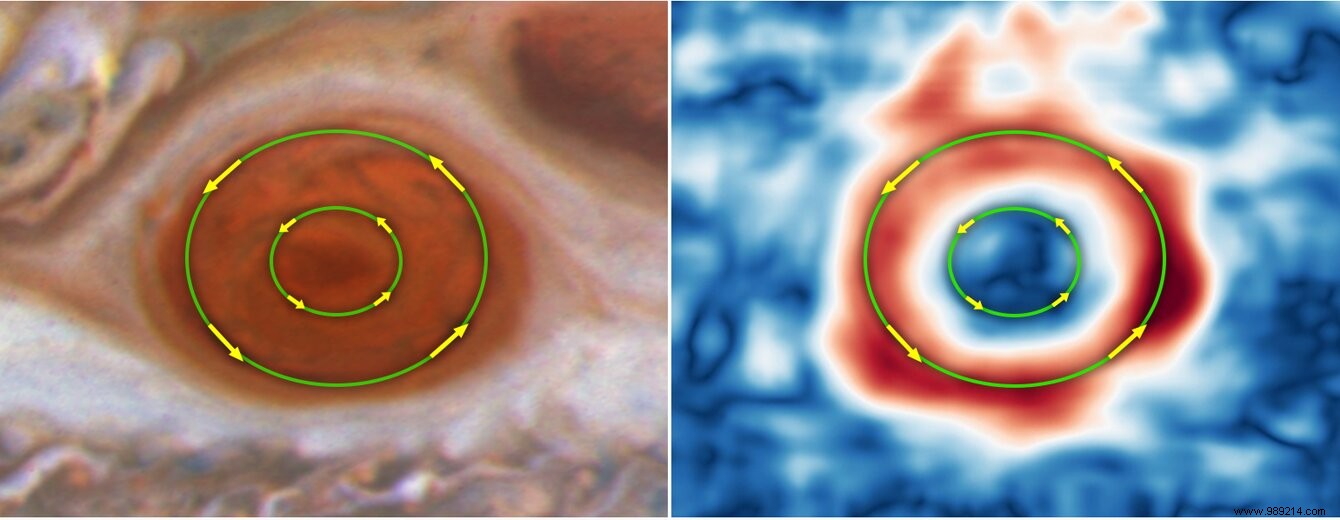Winds in the outermost 'lane' of Jupiter's Great Red Spot are picking up, reveal eleven years of Hubble observations. For the time being, the reasons for this development are unknown. Details of the study are published in the Geophysical Research Letters.
The Great Red Spot has been around for over 400 years. By comparison, the longest weather storm on Earth, Hurricane John, lasted just 31 days. It was in 1994. How to explain this longevity? Imagine the Great Red Spot as a counter-clockwise spinning wheel wedged between two conveyors moving in opposite directions. These jet streams, which encompass the storm, can travel at nearly 350 km/h, thus continuing to feed the momentum in the vortex. And obviously, this momentum is changing.
Based on regular data provided by Hubble, a team of astronomers has indeed found that the average wind speed operating within the limits of the storm ( high-speed ring) had increased by 8% between 2009 and 2020 , now speeding at almost 650 km/h.
"No one has seen this before “, underlines Michael Wong of the University of California at Berkeley. "But that's something only Hubble can do ". On Earth, researchers use satellites and other aircraft to closely track major storms in real time. Concretely, Hubble is the only telescope capable of doing the same thing with Jupiter.
Hubble's longevity and continued observations also made this revelation possible. The change in wind speed measured is indeed less than 2.5 km/h per Earth year . "We're talking about such small changes that if we hadn't had eleven years of data, we wouldn't have known they had happened “, continues the researcher. “With Hubble, we have the precision we need to spot a trend “.
Also note that, conversely, the winds operating in the innermost region of the spot move much more slowly. They reach the equivalent of human walking speed.

How to explain this speed increase? "It's hard to diagnose, because anything below the cloud tops is invisible in the data “, deplores the researcher. “On the other hand, it is an interesting piece of data that can help us understand what powers the Great Red Spot and how it maintains energy . There is still a lot of work to be done to fully understand it “.
Also remember that Jupiter's Great Red Spot continues to shrink . In the late 1800s, the storm was indeed four times the diameter of the Earth. By the time Voyager 2 passed in 1979, the vortex had already shrunk to just over twice the width of our own planet. Now it is only 1.3 times the size of the Earth. In twenty or thirty years, the Great Spot could therefore disappear. Still, for now, it remains the biggest storm in the Solar System.